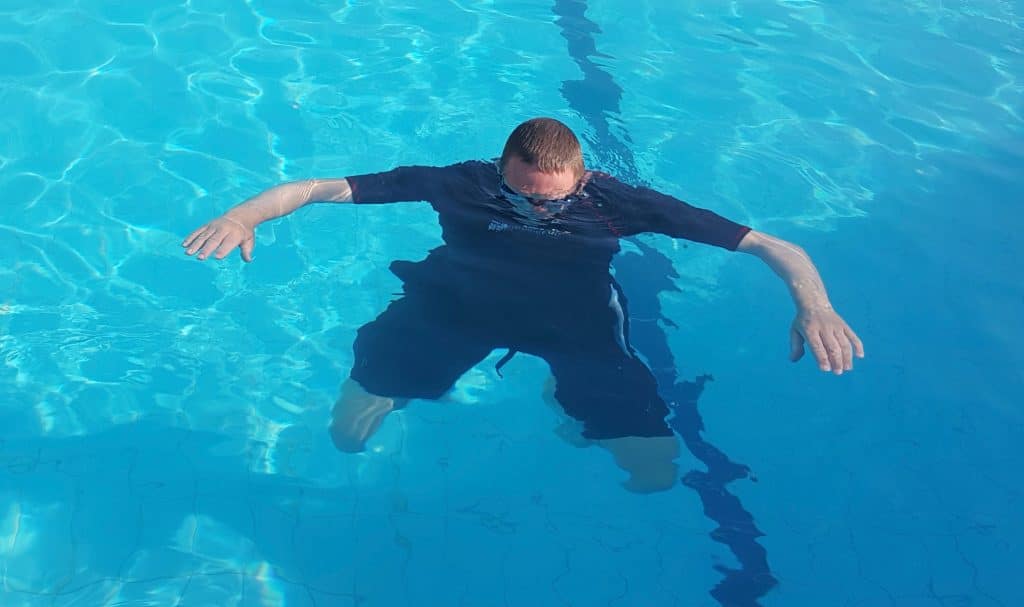If we’re not too busy getting from one end of the pool to the other, it’s good to practise staying vertical and in the same place.
Since we live most of our life trying, sometimes struggling, to stay upright, it’s nice to get in water and explore movement in the horizontal plane. But there’s a lot of very useful experience to be gained by practising staying vertical, in deeper water.
And true verticality, with a free neck, a head that goes up out of our spine and an open back, might be easier for some of us to achieve in water than on land.
The idea of treading water tends to put us in ’emergency response’ mode. We do more work than necessary to keep our face above the surface and try too hard not to sink below it. But letting ourselves go under is the best bit.
With practice, when we do let our face go underwater, we can rest there and enjoy a few moments of being suspended, doing nothing.
It may take a bit of work before you’re free of anxiety when letting yourself go, vertically, underwater. Can you just let air out without overdoing it? Is your neck and particularly your throat relaxed? Is your back open so that your ribs can move to let air out? Or are you tightening your throat and locking your rib cage?
I worked a lot on this on holiday in Rhodes last week. Particularly in the morning, I had to give it lots of time before my breathing started to flow. Bobbing up and down without going anywhere was a really good opportunity to ask myself what was going on with my breathing. Had I just got in the pool and swam, I may not have noticed the work I needed to do to stop fixing my ribs and let my body breathe.
How to Tread Water
Try starting with your face underwater, looking straight ahead. Once you realise how easy it is to be here, you can explore how little effort you need to get your face out to breathe. Use just a little bit of downward pressure on the water with your hands and feet and send the crown of your head up to the sky. Keep letting air out as your lips break the surface. Don’t be in a rush to inhale. Keep your chin in the water. Only come up as far as you need to. Try breathing in through your nose, to avoid gasping.
Bobbing Up and Down
When you’re comfortable both resting underwater and treading water you can play with bobbing up and down, spending most of your time underwater, letting your back expand and your head go up away from your feet, popping up for air when you need it and letting yourself drop down again as soon as you’re ready.
Summary of the benefits of staying vertical in deeper water:
1. It improves your awareness of your head, neck and back relationship.
2. It helps you see how something, related to fear, interferes with your body’s natural inclination to breathe out and let air come in.
3. It’s good for developing feel for the water because it requires you to scull with your hands.
4. It teaches you that less is more. Too much tension makes you heavy and exhausts you. You have to stay light.
5. Being able to do it makes you safe in deep water though this point is usually over emphasised at the expense of the others.
Staying vertical in water makes a change from getting from a to b and it might help you change your response to the need to be upright on dry land.


